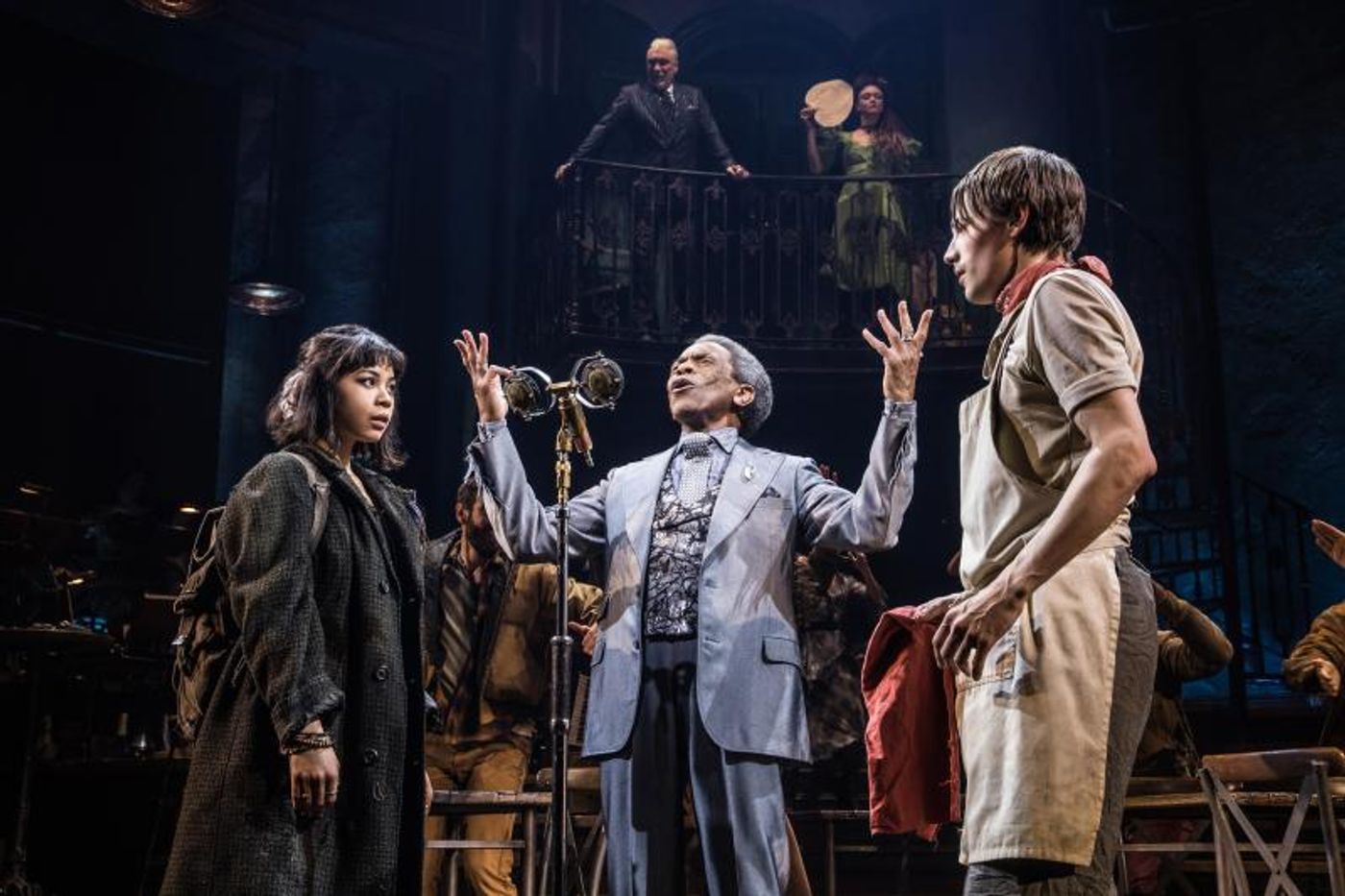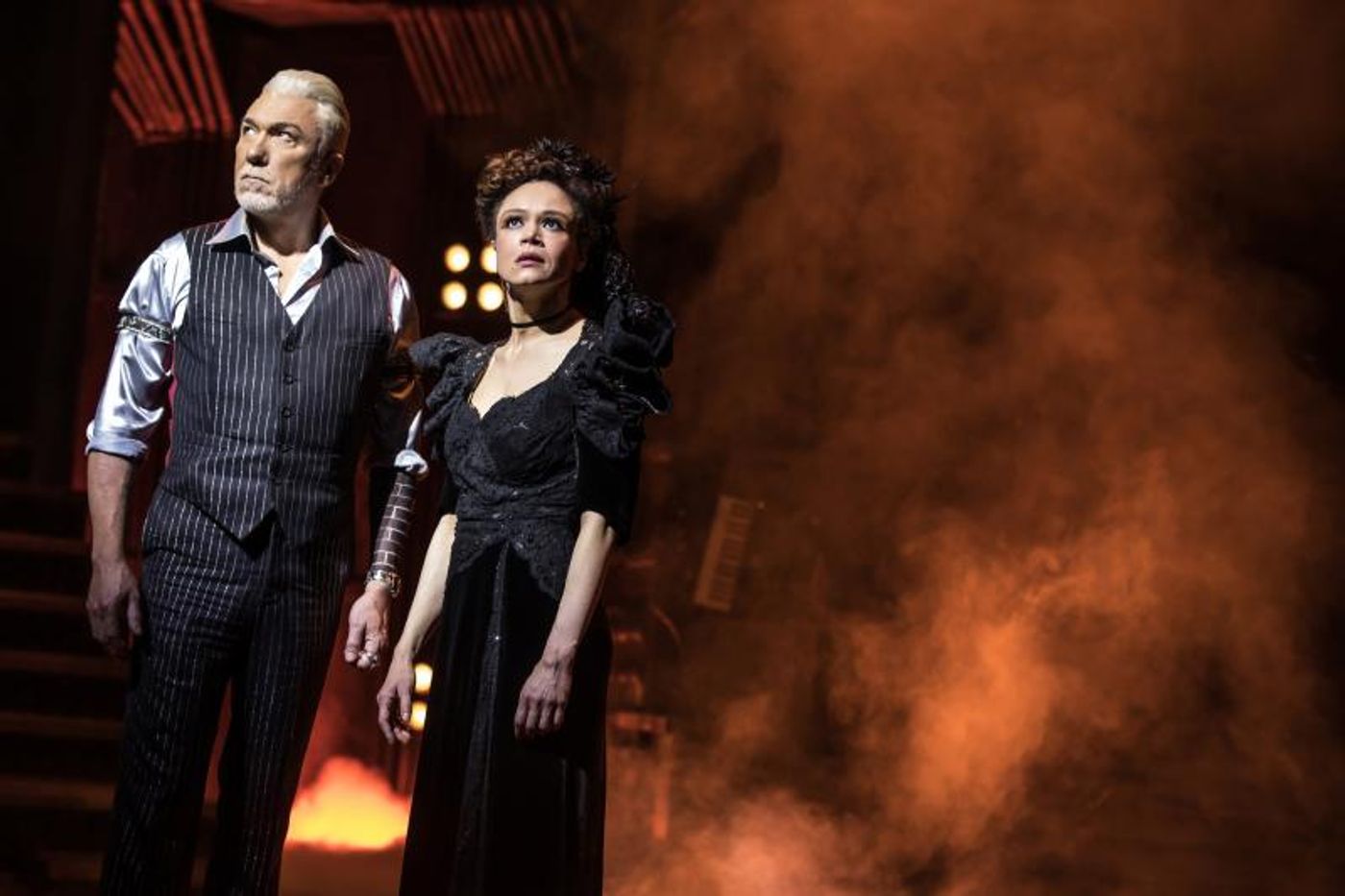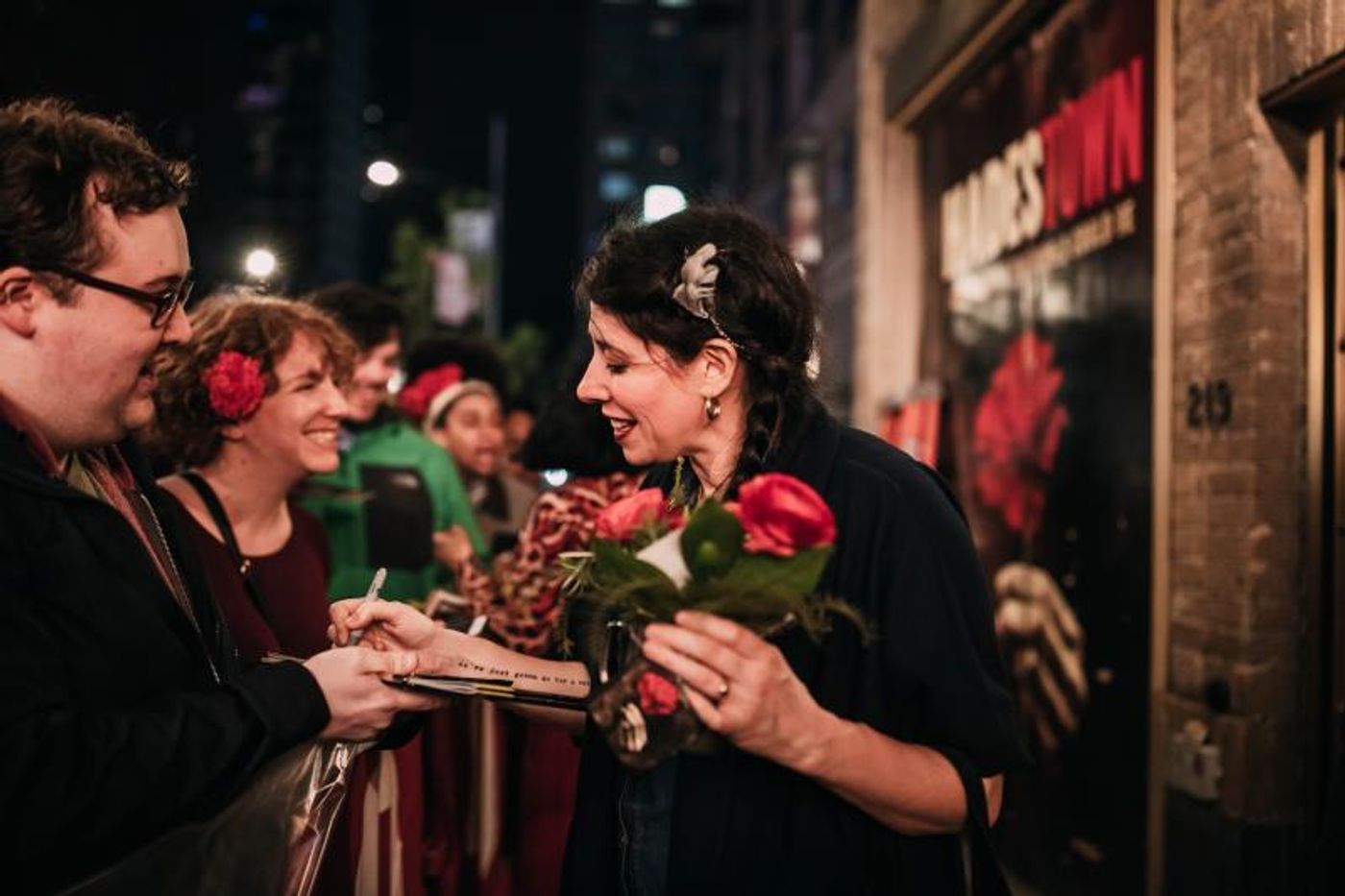She Believed She Could: Rachel Chavkin Makes an Old Song New Again

Over the course of a few years, director Rachel Chavkin has gone from being a staple of the off-Broadway scene to the director with one of the most distinctive and creative aesthetics on Broadway. That's just one of many ways that she proves she's in a league all her own.
The Tony-winning director of Hadestown is an unusual kind of presence in today's Broadway landscape: the kind of artist who seamlessly blends an avant-garde, experimental sensibility with the sometimes-restricting aesthetic of Broadway. For her, though, it's a natural sense of permeability between the two.
"The bifurcation between the two [worlds] feels very American - it doesn't necessarily exist elsewhere. In London, for instance, it feels like there's more permeability between somewhere like the Battersea Arts Centre and The National Theatre, War Horse being a good example of formal experimentation with more traditional narrative. It's really about what level of access you want to give audiences to the story you're telling...I'm now drawn to character-driven, emotionally led stories, but I like to see them get told in formally interesting ways."
Both of Chavkin's Broadway shows have, of course, famously broken out of the confines of stereotypical "Broadway Musical Theatre Shows" to create rich, three-dimensional worlds onstage that also invite the audience right into the action. Hadestown is less off-the-beaten-track than her previous project, the wild, immersive, and wonderful Natasha, Pierre, & The Great Comet of 1812, but it's still a show that strikes a delicate balance between the visual and lyrical poetry and the necessity of theatrical representation.
"[Anaïs Mitchell] and the designers and I talked a lot about how the show wanted to inhabit the theater, and even IF it wanted to," she explains. "I was actually very skeptical, at first, of how much 'theatre' this show wanted because the storytelling was so of the music world, with each song being a beautiful portrait moment that opened up but wasn't necessarily propulsive narratively. So we spent years figuring out how theatrical it wanted to get."

That balance, she says, took some time to achieve, and at one point, they went too far the opposite way in an attempt to course-correct.
"With the Canadian production [in 2017], we actually went way overboard in terms of literal theatrical representation during the design and tech process, and it was not good! It lost all sense of humor and lost all sense of exuberance and became actually quite heavy. Between first and second preview we cut half the Act 1 set, with designer Rachel Hauck's blessing, and the piece came roaring back to life. So we backtracked from there and found the bones of the London and, eventually, the Broadway production."
In many ways, Chavkin's career is proof of how those threads of experimentation and more classical, literal representation can braid together into a singular path. In the years before college, she attended Stagedoor Manor, the famous theatre camp, and fell in love with theatre, choosing to study it in college. Once there, she cites a performance of the Wooster Group as the moment she got "hooked" on experimental theatre.
Chavkin's eye for detail and symbolism is apparent when we talk about some of the specific stage pictures she's created that have become iconic. There's an understanding of spectacle and emotion, along with a deeply intellectual underpinning of multilayered symbolism. Take, for instance, the famous chandelier at the visual center of The Great Comet.
"These chandeliers were very inspired by the chandeliers at the Met, which are these very violent images - they're inspired by the atom bomb," she reveals. "For the very end of Comet, which is Pierre describing this moment of philosophical transcendence and epiphany, it's immediately followed in the novel by the invasion of Napoleon and the destruction and death of a bunch of our main characters. So it felt right that what had been this very beautiful object of opulence in the center of the space suddenly becomes this radiating, beautiful but also violent object in the center. It feels kind of like a bomb, and then it slowly passes, in the way that a comet does."
In Hadestown, that mesmerizing image is, once again, a lighting-centric moment developed in collaboration with designer Bradley King. During the song "Wait For Me," in which Orpheus journeys to the Underworld, a series of enormous lamps swing from overhead in beautifully choreographed arcs, even over the first row or so of the audience. That image, in fact, was the first image Chavkin had for the show, while listening to the 2010 studio album.
The other common thread in Chavkin's most visible work is a sense of the political and moral beneath the spectacle. That possibility for deep, reflective meaning is one of the key things Chavkin looks for in a project.

"I'm looking to have politics - though not necessarily with a capital "P;" I'm needing a moral center I can get behind, although not didactic... but [for instance], the labor politics of Hadestown - I think those were often overlooked, because the show has romance as well, [it got] categorized as a show with more 'female' leanings that couldn't also have this political spine at its core about solidarity."
Along with that moral, philosophical element, Chavkin's theatrical decisions rest heavily on the possibilities of collaboration.
"Because I know how long it takes to develop a new show, I want to make sure that a collaborator is really down for the rigor it takes, over years, to do the level of revisions that are gonna be required. A show is forged not so much through the writing, but the rewriting process," she reflects. "I feel very fortunate, both with Great Comet and with Hadestown, to be with shows that grew quite slowly, and I think that's not a bad thing."
Chavkin and her collaborators are also part of a growing call in the theatre for growing the diversity of voices. While accepting her Tony Award in June for best director of a musical, Chavkin used her moment on Broadway's biggest stage to call for more inclusion and more active seeking of diverse, unique, and new voices. It's time, she says, for the progressive theatre community to put their money where their mouth is.

"Everyone is ready to go, in terms of their future or early Broadway careers, in part because we're seeing such a profound, beautiful expansion in downtown theatre, in regional theatre. There's so many different artists - female artists, artists of color, trans artists - who are telling stories that haven't been seen on American stages, and are some of the most formally exciting as well as content-shaking pieces of theatre," Chavkin enthuses.
"But at the same time, I'd hesitate to be overly rosy about it, because the Broadway statistics are so poor. There's still a lot of work to do...and it's particularly frustrating because our world is filled with people who profess to be progressive, but there's a gap that becomes all the more painful between declared values and lived values."
It's because of that diversity in experience that Chavkin gives an unexpected but, in hindsight, completely brilliant answer to a question about advising young artists.
"I think that would come from a standpoint of almost trying to 'protect' someone, and I think the main lessons that matter are the ones that you earn," she explains. "It's the difference between pedagogy and andragogy, ie the teaching of children vs. the teaching of adults." Instead, Chavkin points out the importance of one's own lived experiences, rather than trying to follow in someone else's footsteps. She's certainly walked her own path, and it's led her - and us - to some pretty spectacular places.
Videos


